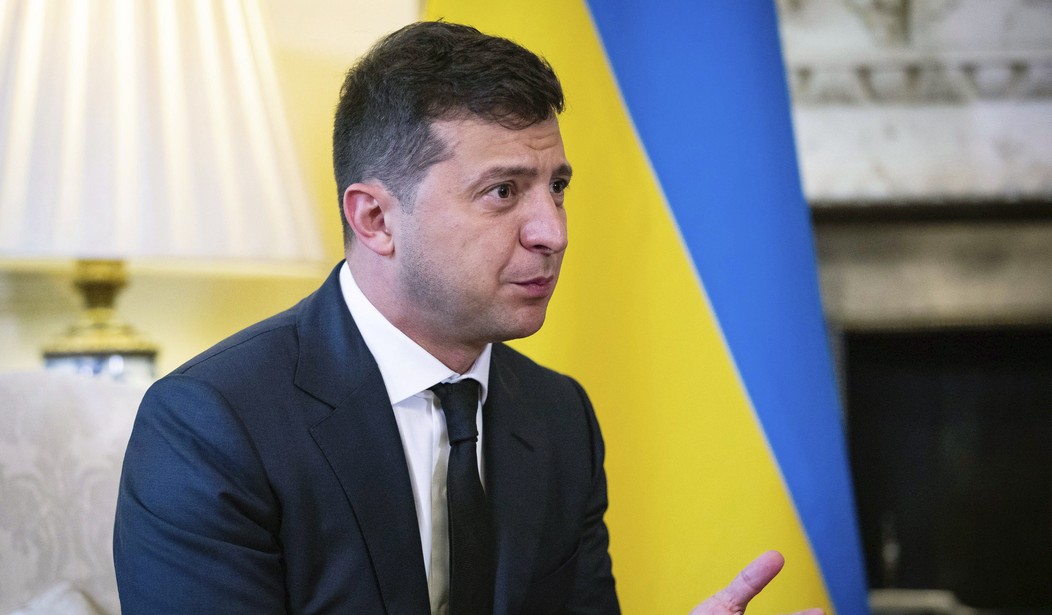This is going to be an interesting week for Ukraine. The United States under the leadership of President Joseph R. Biden has ramped up tensions, insisting that Russia is preparing to invade the country and terrible sanctions will follow, changing the stability of the economic landscape of planet Earth. In response, Russian President Vladimir Putin also decided to raise the stakes in the poker game by extending military exercises of his troops beyond this weekend’s planned nuclear war readiness finale.
Why not? The two leaders are playing tit for tat in their positional bargaining — with neither one wanting to lose face. However, both sides insist they are holding short of overt actions.
The U.S., which is not itself prepared to fight to defend Ukraine from an invasion, continues to make clear that its threat of sanctions remains a theoretical concept to be used only if diplomacy fails.
The Kremlin similarly continues to insist that it has no actual plans to invade Ukraine and that its diplomatic goals are primarily about ensuring that NATO’s influence ceases to move eastward with their chosen “line in the sand” at the western border of Ukraine.
The diplomatic impasse that presently prevents a diplomatic solution is because, when the Soviet Union dissolved, Ukraine became a nation that attempted to straddle allegiances between east and west.
Ukraine was a core republic of the USSR. It was the now long-gone superpower’s western frontier. In my younger days as a military analyst, I remember the Ukraine frontier most as that place where the railroad gauges changed from standard gauge of Western Europe’s rail lines to the 5-foot gauge of the Soviet Union.
It was the land of marshalling yards, where Eastern district military units of the USSR would have to change trains to reinforce the tank armies stationed in the Warsaw Pact, if war were to break out on the plains of the Germany’s Fulda Gap. It was a place to play offbeat versions of “War Games” and learn how wars can be won or lost by starving the front lines of resources being ground into junk by the intensity of mechanized front warfare.
It was kind of a fun part of the game because there weren’t too many force structure assets working that far back from the FLOT. I remember running into another one milling around back there that, at the time, went by the codename “Have Blue,” later known as the F-117A Stealth Fighter. For those of you that are into Cold War history, the crossover point was my attraction to making use of the then-new I-2000 bomb warhead that fit neatly into the angular jet’s weapons bay.
The bottom line is that it means that I am just a bit more familiar with how important Ukraine is to the military power balance between East and West. Ukraine is strategic. I understand why the General Staff of the Russian Federation would want to draw a line in the sand in that place. A NATO military presence in Ukraine means that the entire, five-foot rail gauge network from Russia to China is available to transport invading armies deep into the heart of Eurasia, from the very same marshaling yards that it was once my job to figure out how to interdict to prevent the Soviets from reaching the White Cliffs of Dover.
I don’t know whether Joe Biden or the Washington, D.C., Establishment pundits fully realize the significance of this, and how it affects the current political impasse. I’m not sure anyone in the West still remembers how to calculate existential risk assessments from both the Western and Russian perspectives in parallel, to see how the net assessment identifies better ways to preserve global stability. From all the punditry I’ve been soaking in in the past weeks, watching endless amounts of raw material in countless Zooms and YouTubes, I’m thinking not.
I’m seeing way too much of the self-soothing analyses that got nowhere in the Cold War, and too little of the breaths of fresh air that led to constructive agreements and peace dividends. But the Unites States should take such things into account, I think, as we push Putin’s buttons and put Russia into a corner from which the bear must, at some point, lash back.
We have no idea how to contain the consequences of an invasion-sanctions future state
Right now, all I hear is how much fun it would be to return to the days of the Cold War. Which is garbage! I haven’t heard one tiny bit of how we intend to manage stability over a protracted period of economic and kinetic tension from the U.S. policy in the community. The lack of forethought here is frightening.
We are already looking at future where the US Navy will begin to be challenged on the high seas by the next generation of hypersonic weapons by both Russia and China. There’s a target in the shape of a U.S. aircraft carrier and an Aegis missile cruiser scratched into a metered test range in the middle of the Chinese desert.
Our nuclear force posture is stuck in Cold War configuration, with an antiquated strategy using oversize yield warheads that can’t be used without triggering an immediate escalation to general nuclear war. We missed the modernization boat to more flexible, lower yield inventory investments that tighter accuracy technology enabled. We’ve let our nuclear weapons development infrastructure degrade to the point that it’s a maintenance facility instead of a continuous improvement capability to meet new missions and threat pivots.
The Russians didn’t miss that boat. That is why this weekend’s pre-planned nuclear war scenario exercises in Ukraine and Belarus by the military forces of the Russian Federation are an actual capabilities assessment drill. I’m pretty sure the mythical computer “Joshua” from that old ’80s movie would have some scenarios now where the ability of the U.S. to ensure credible deterrence by preventing the opponent from any path to checkmate us is no longer clear. I do hear lament from the community that this is so, but I don’t really see much new in U.S. doctrine for isolated, limited, theater, general, or protracted nuclear conflicts.
Our Department of Defense leadership spends more than half of its senior briefings talking about diversity and inclusion programs, instead of lobbying Congress to authorize funds to re-engineer the US force structure to negate evolving threats.
Let’s face it. We are demobilizing the U.S. force projection capability; and our adversaries can see it plain as day.
Zelensky and Putin
I think the guy to watch this week is going to be Ukrainian President Volodymyr Zelensky. He’s the man holding the key to diffusing the tension.
Zelensky has begun to show some impatience with the West’s claims that invasion was imminent. He voiced the obvious question, asking if the U.S. was so convinced that Russia would invade Ukraine, why not initiate sanctions now to begin the economic leverage to force Putin to back down?
It’s a legitimate question.If invasion is inevitable, why shouldn’t the U.S. and its allies begin to economically block Russia’s access to the global trade and financial system, and use that leverage to force diplomatic concessions about honoring Ukraine’s sovereignty and right to determine if it wants to join NATO? Why shouldn’t the United States release strategic reserves of oil to drive the spot market price down and begin to limit the ability of Russia to use the high price of oil to pay for a permanent state of military exercises for its troops in Russia and Belarus? Why won’t the U.S. put its money where its mouth is?
The true test to that question is that the U.S. could be wrong. Maybe the Kremlin is telling the truth that they have no intention of invading Ukraine. And maybe, what Putin is looking for right now is Ukraine to not join NATO?
I think this week, it boils down to Zelensky making that call. He is in a position to use his country’s right of self-determination to declare that the former Soviet Republic of Ukraine wishes to continue to pursue a middle ground between East and West for the foreseeable future. Zelensky could cut a deal with Putin that, in exchange for respecting Ukraine’s sovereignty, the Ukrainians will defer consideration of applying for NATO membership until such time that the economic and political relations of the spheres of influence between East and West are more stable and cordial. Technically, there’s no need to run into NATO’s arms to protect Ukraine from Russian invasion — if Russian isn’t invading.
In the meantime, Ukraine wishes to have good relations with all of its neighbors, to pursue its own self-interest by being the exemplar gateway between East and West. So, the only ask Zelensky should make of Putin in his phone call is that, as part of Russia’s agreement to peace, it will not interfere with Ukraine establishing better economic relations with the European Union.
That’s kind of where this journey began for Ukraine when the walls fell. I’ll be curious to see if Zelensky asks for it or if Putin offers it. Either chess player has the option to win this gambit.














Join the conversation as a VIP Member